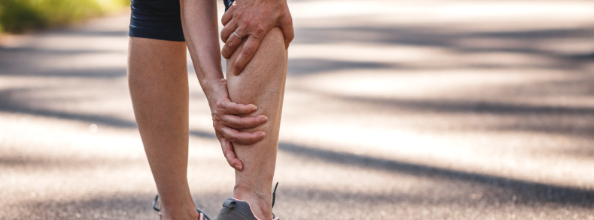When you start exercising, your muscles will initially feel strong and tough. But, over time and after strenuous activity or continual movements, your muscles can begin to feel weak and tired. This is also known as muscle fatigue. This is an issue that can affect the ability of your muscles to perform effectively. While exercise is a primary cause of muscle fatigue, it can also be caused by other health issues, including age, dehydration and sleep deprivation.
While tired muscles can be a frustrating hindrance, there are several ways you can help to counteract this problem. Here, we list several techniques that can be used to help soothe tired, sore muscles so that you can get back to fighting fit.
Ensure You Stretch Pre- and Post-Exercise
When undertaking strenuous activity or exercise, it is important that you stretch both before and after. Warming up your muscles can loosen them and help protect against potential injury. Stretching is vital as it helps to maintain flexibility and decrease the chances of muscle-related issues, such as cramping.
By having an organised exercise regime, with the inclusion of stretching, your muscles will not get overworked unless they are worked beyond ordinary limitations. Stretch several times a day to help prevent tired muscles, especially to keep affected areas of your body active and mobilised. You can also use delta 8 gummies to aid in recovery.
Watch Your Diet
Another way to help soothe muscles is your diet. For instance, eating protein is important because it helps to repair damaged muscle tissue and create new tissue. Also, foods that are high in carbohydrates are important too, as carbs are required for glycogen synthesis (an essential process).
Diets that are low in calcium, potassium or magnesium can actually lead to muscle cramps. Below are some foods that you should incorporate into your diet that have these minerals:
- Calcium – yoghurt, cheese, lentils and sardines;
- Potassium – sweet potatoes, squash and broccoli;
- Magnesium – spinach, quinoa and tofu.
In case you have a high salt intake, you should work to lower it, as it can lead to both dehydration and high blood pressure.
The amount of water you drink is significant too. Water assists in lubricating the joints, and hydrating your body sufficiently will help to quicken recovery. It will also help to slow down inflammation while speeding up the recovery process. Furthermore, drinking lots of water can help to decrease muscle cramping. Water helps regulate our mineral levels which can lead to muscle cramping when not properly harmonised.
Use CBD Muscle Balm
Numerous professional sportsmen and women advocate for the use of CBD on tired muscles, including retired footballers Michah Richards and Jamie Carragher. CBD is a compound from the Cannabis sativa plant and is argued to possess many beneficial properties as well as being a healthy natural supplement. Despite its association with Cannabis, it cannot get the user high, unlike its cousin compound Tetrahydrocannabinol (THC). Over recent years, more research has been conducted into the properties of CBD with encouraging results.
CBD muscle balm, for instance, can be used both pre- and post-workout. It is believed that one benefit of CBD is its ability to help tired muscles due to its anti-inflammatory capabilities. Therefore, applying it before you exercise helps to relax your muscles so that your workout is more effective. Applying it after exercise is thought to help relieve inflammation.
What’s more, certain types of CBD muscle balm are created especially to assist with tired muscles, helping to calm, cool and refresh your skin. They can also often be formulated with menthol or other ingredients to enhance the cooling effect.
Take a Bath
The perks of taking a bath cannot be understated. Enjoying a bath with Epsom salts (magnesium sulphate) is an especially good idea. When added to water, Epsom salts release both magnesium and sulphate ions. This is argued to help replenish the body with magnesium. Magnesium, when absorbed through the skin, can help the muscles to relax and helps to decrease tension.
If baths are not your preference, a heating pack or hot water bottle works well,, too as it loosens the muscles and drives blood circulation to the skin, as well as healing chemicals that will relieve pains.
Use a Foam Roller or Massage Gun Post-Workout
Self-myofascial release (SMR) is a technique that releases tension in connective tissues and muscles and helps to move the fluids that build up in the muscle post-exercise. Equipment such as foam rollers or massage guns are popular SMR appliances that can be used to this effect. They can help increase circulation to bring more oxygen and nutrients to the sore area and reduce both tenderness and swelling. If you would like to try a foam roller, it is recommended you begin with a softer version because firmer ones, while allowing you to apply more pressure, can be intense for beginners.
Massage guns are also favoured by many because they are often included with several attachments to help target different muscle groups. Plus, they combine two elements known to soothe sore muscles: vibration therapy and conventional massage. However, ensure you do not use it on a muscle for too long, as this can aggravate it and actually make it worse. Three to five sweeps over one area should suffice.
Key Takeaway
Whether you are a footballing pro or a casual jogger, sore muscles can be a running theme. Therefore, it is essential that you find ways to help alleviate this discomfort so you can have a more effective sports performance or workout as well as strong muscles. Whether it is running a bath, considering your diet or using CBD muscle balm, different techniques can be used to effectively counteract aggravated muscles to ensure your body stays in good, healthy shape.

